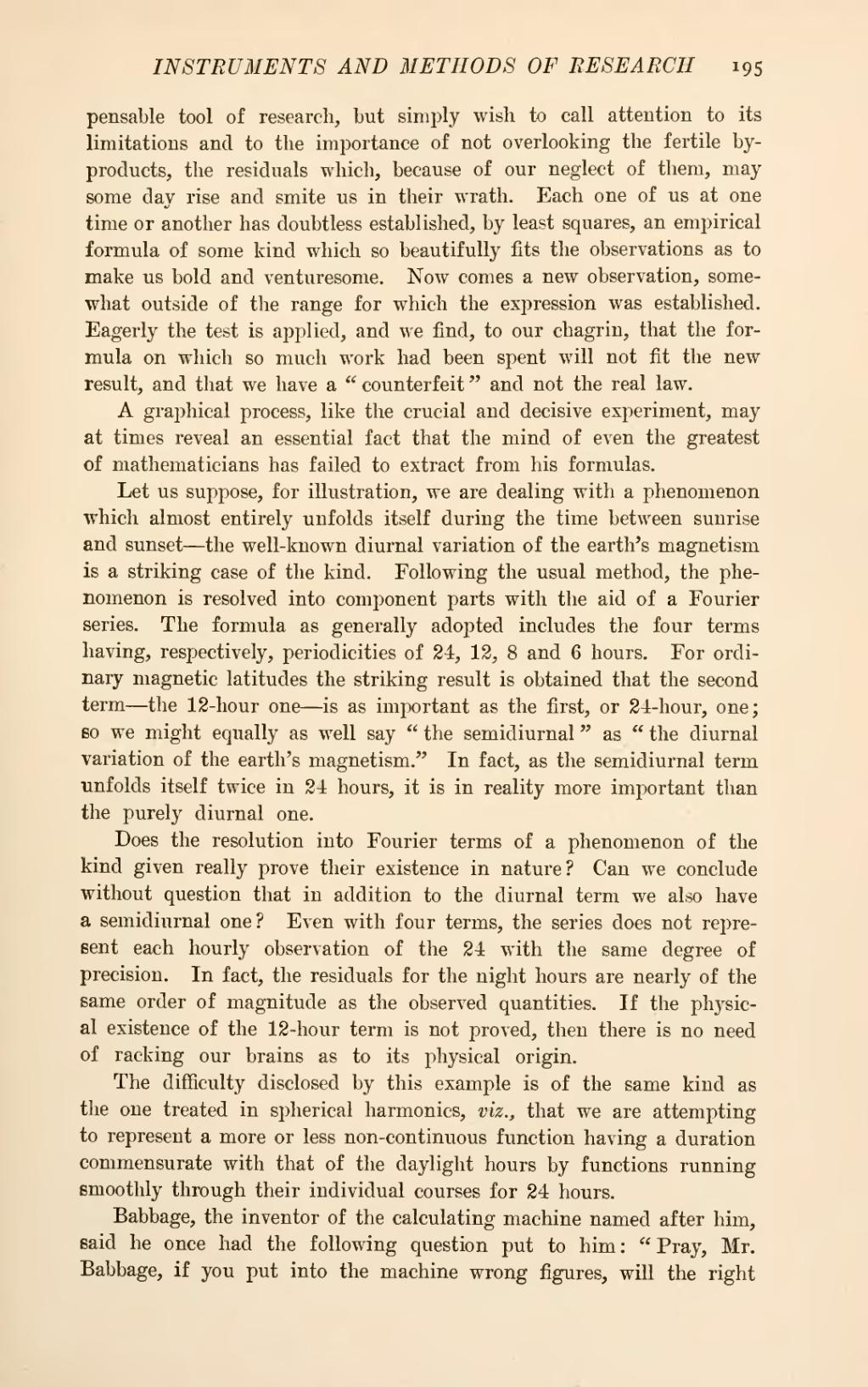pensable tool of research, but simply wish to call attention to its limitations and to the importance of not overlooking the fertile byproducts, the residuals which, because of our neglect of them, may some day rise and smite us in their wrath. Each one of us at one time or another has doubtless established, by least squares, an empirical formula of some kind which so beautifully fits the observations as to make us bold and venturesome. Now comes a new observation, somewhat outside of the range for which the expression was established. Eagerly the test is applied, and we find, to our chagrin, that the formula on which so much work had been spent will not fit the new result, and that we have a "counterfeit" and not the real law.
A graphical process, like the crucial and decisive experiment, may at times reveal an essential fact that the mind of even the greatest of mathematicians has failed to extract from his formulas.
Let us suppose, for illustration, we are dealing with a phenomenon which almost entirely unfolds itself during the time between sunrise and sunset—the well-known diurnal variation of the earth's magnetism is a striking case of the kind. Following the usual method, the phenomenon is resolved into component parts with the aid of a Fourier series. The formula as generally adopted includes the four terms having, respectively, periodicities of 24, 12, 8 and 6 hours. For ordinary magnetic latitudes the striking result is obtained that the second term—the 12-hour one—is as important as the first, or 24-hour, one; so we might equally as well say "the semidiurnal" as "the diurnal variation of the earth's magnetism." In fact, as the semidiurnal term unfolds itself twice in 24 hours, it is in reality more important than the purely diurnal one.
Does the resolution into Fourier terms of a phenomenon of the kind given really prove their existence in nature? Can we conclude without question that in addition to the diurnal term we also have a semidiurnal one? Even with four terms, the series does not represent each hourly observation of the 24 with the same degree of precision. In fact, the residuals for the night hours are nearly of the same order of magnitude as the observed quantities. If the physical existence of the 12-hour term is not proved, then there is no need of racking our brains as to its physical origin.
The difficulty disclosed by this example is of the same kind as the one treated in spherical harmonics, viz., that we are attempting to represent a more or less non-continuous function having a duration commensurate with that of the daylight hours by functions running smoothly through their individual courses for 24 hours.
Babbage, the inventor of the calculating machine named after him, said he once had the following question put to him: "Pray, Mr. Babbage, if you put into the machine wrong figures, will the right
